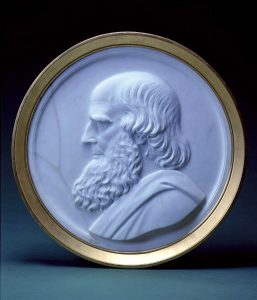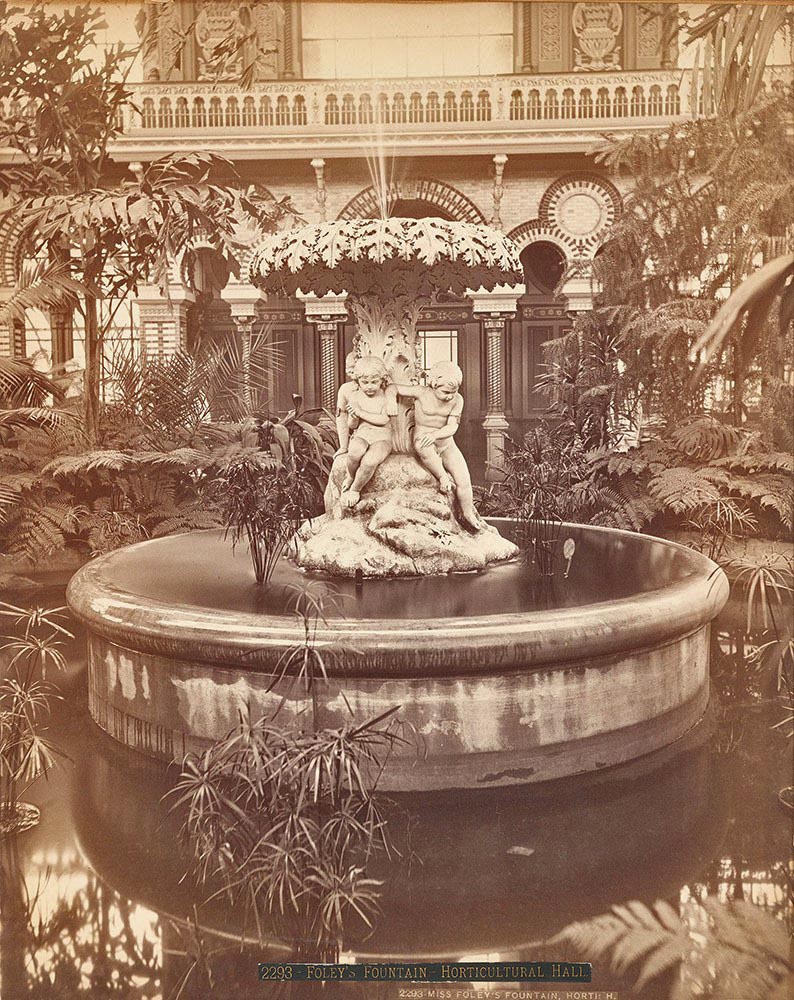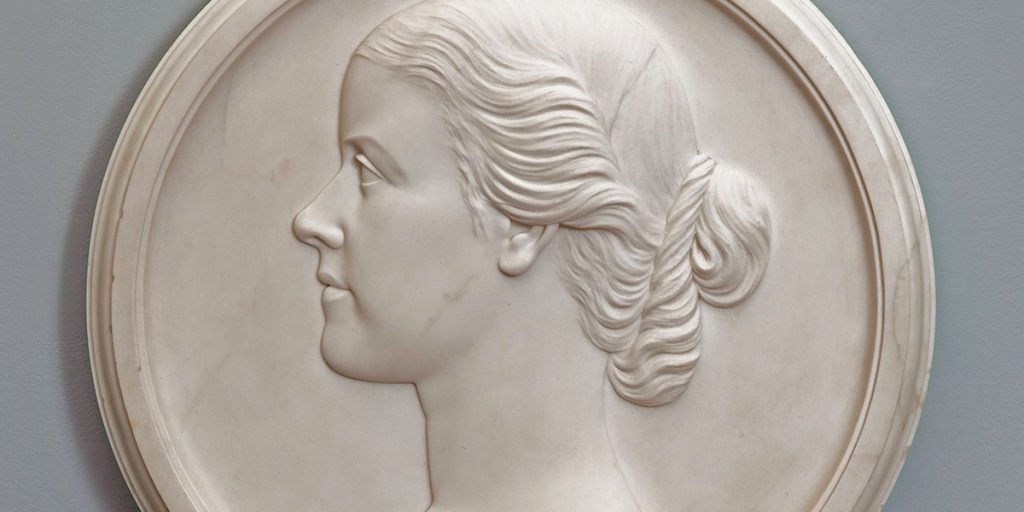By: Richard Saunders, Museum Director and Professor of History of Art and Architecture
In the past year the Museum was able to acquire a stunning neoclassical marble portrait tondo carved in 1862 in Rome. What is particularly notable about the relief is that it is among the first identified sculptures of its kind by a Vermont-born woman artist. The relief, signed and dated “M. F. Foley. SC. Roma. 1862,” is by Margaret F. Foley (1827–1877) who grew up in Vergennes, a town just a few miles from Middlebury.

While stories abound of artists overcoming challenging odds to establish themselves and make a living from their work, it was many times more difficult for American women than men to do so in the nineteenth century. By 1850, for example, the vast majority of American artists were still men, and professional opportunities for women were few. But Foley, who was the daughter of a farmer and worked in her youth as a maid, had a level of determination to succeed that has characterized most women artists over time.

In Foley’s case she made her way from Vermont to Boston in 1841, and worked in a spinning room in the Merrimack Manufacturing Company mill in Lowell before she enrolled at the School of Design for Women, where she learned how to cut cameos, a sub-specialty of carving that was deemed acceptable for women. In so doing, by 1857 she was described as the foremost female cameo cutter in the United States. Simultaneously, she developed friendships with a handful of women, among them Charlotte Cushman and Emma Stebbins with whom she traveled in 1861 to Rome, which at the time was a mecca for sculptors both from the United States and elsewhere in Europe. There over the next fifteen years her talents blossomed, and she established herself as a sculptor popular with American tourists who often sought works of sculpture and painting by which to celebrate their travels.
As a consequence, Foley catered to this clientele by creating portrait reliefs, which were less expensive and traveled more easily that sculpture in the round. While the name of the person depicted in Middlebury’s recently acquired relief is unknown, Foley carved reliefs for many distinguished Americans that included William Cullen Bryant (Mead Art Museum, Amherst College), the prominent poet, journalist, and long-time editor of the New York Evening Post.

The contemporary press looked favorably on Foley, and a combination of carving skill (unlike some of her contemporaries she carved all works herself and did not depend on studio assistants) and engaging personality led her to be successful. Among her most notable achievements was a large fountain she was invited to carve for Horticultural Hall at the Centennial International exhibition of 1876 in Philadelphia. Her death the following year, at age 50 and at the height of her career, precluded her receiving as much recognition as some of her contemporaries.

Pingback: Vermont Sculptor Margaret Foley Created Marble Children's Fountain for the 1876 Centennial Exhibition in Philadelphia - Boston Irish Tourism Association
Dear Richard,
I am so thrilled for the museum that you acquired this work!! Look forward to seeing it in person some day.
My best, Jeanie Fritts
What a wonderful and beautiful purchase. Where is the marble from?
Is the fountain still in existence?
Sally: I know this is a very belated reply to your question, but I came across this article and your comment this morning while working on some research that focuses on Foley’s Centennial fountain. In fact, it does still exist (I just visited it yesterday). The fountain is located in Philadelphia at the Fairmount Park Horticulture Center (located on the site of the original Horticultural Hall of the Centennial). Horticultural Hall sadly was demolished in 1955: https://myphillypark.org/explore/parks/fairmount-park-horticulture-center/